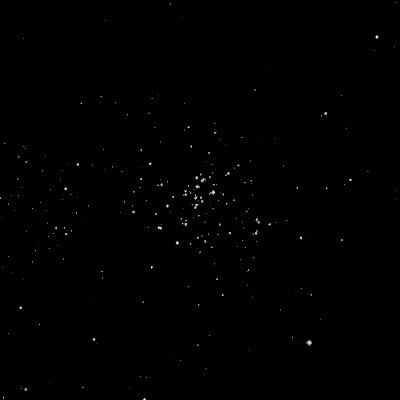
16x80mm (6/18/85): this bright cluster appears partially resolved even in my 16x80 finder.
Nicolas-Louis de Lacaille discovered NGC 6124 = Lac I-8 = D 514 = h3626 in 1751-1752 with a 1/2" telescope at 8x. During his expedition to the Cape of Good Hope he catalogued "a fairly big tailless comet." James Dunlop observed it on 10 May 1826 as "a round cluster of small stars of nearly equal magnitudes, about 12' diameter, considerably congregated to the centre, not rich in small stars. This answers to the place of 44 Normae, but there is no nebula." Dunlop made a total of 5 observations and his position is accurate.
On 5 Jun 1834 (sweep 456), John Herschel logged "Viewed; a brilliant cluster class VII.; p rich, L, irregularly scattered, fills field, stars 8,9,10,11th mag." On 4 Aug 1834 he recorded the cluster as "cluster, bright, large, loosely scattered, not much compressed in the middle, fills nearly a field, consists of about 50 or 60 stars 9..11th mag."
200/250mm - 8" (6/27/81): fairly large but scattered, richer in center.
300/350mm - 13.1" (6/18/85): bright, fairly rich, large, roughly 125 stars are resolved.
600/800mm - 25" (4/5/19 - OzSky): gorgeous open cluster at 102x (31mm Nagler) and 244x (13mm Ethos). with several hundred resolved stars within a 25' field. Contains a very large number (perhaps 30) of 9th and 10th magnitude stars. There is a condensed group of roughly 3 dozen stars in the center, many forming easy but eye-catching pairs. The central stars are distributed irregularly with a nearly vacant lane running roughly NW to SE. The "halo" stars are spread out fairly evenly and a roughly circular outline of ~25'. Two 10" pairs forming a wide "double-double" is close east of the central group.
Notes by Steve Gottlieb